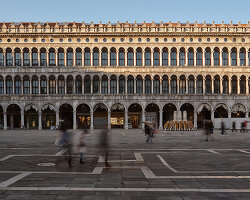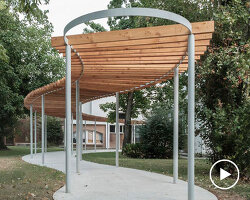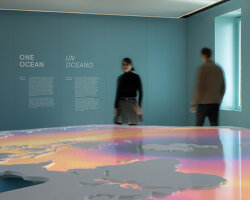architect giovanni vaccarini has completed a waste-to-energy power plant near the italian city of ravenna. the project, which seeks to redefine the relationship between energy production and the agricultural landscape, has been built on the site of a former sugar factory and is fully integrated within its context. titled ‘powerbarn’, the structure’s imposing mass is intriguingly disguised behind a faceted wooden skin that distorts its scale and appearance.
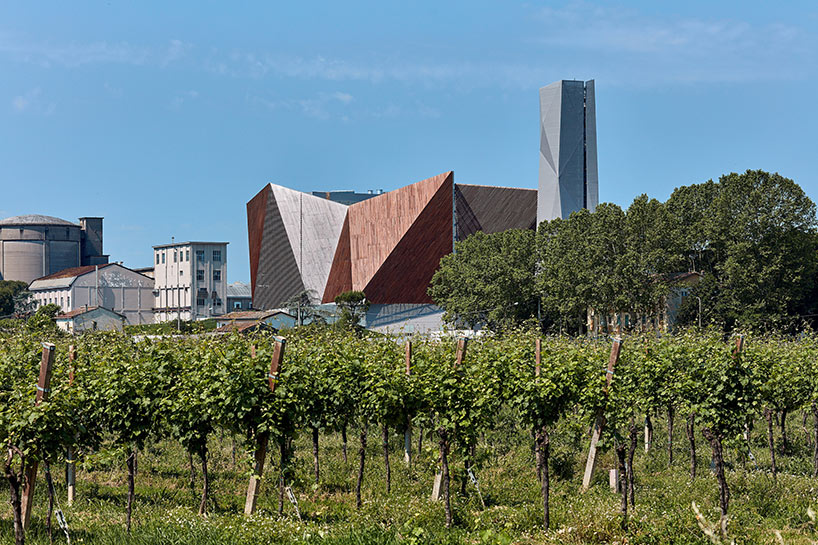
all images by massimo crivellari | film by the piranesi experience
giovanni vaccarini was also responsible for the site’s larger masterplan, with dunes and natural pathways surrounding the main building. these dunes, which were built using earth excavated from the site during construction, have been covered with fresh soil and planted with new vegetation. the biomass plant itself is fueled with wood chips and other materials that come from a 70 kilometer (43 mile) radius of the site.
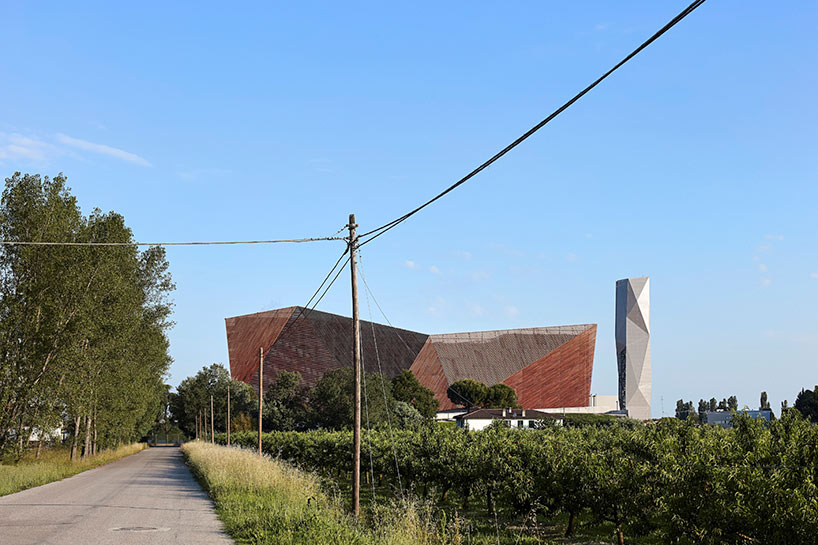
‘our intention was to create something similar to a natural bastion, almost a dune, along the edge of the area now converted into the pole for energy production — hence an element closely linked to the ecological functions of an environment,’ explains giovanni vaccarini. ‘not a barrier, but a functional element that would express our design intentions: to create a permeable, accessible and living element.’
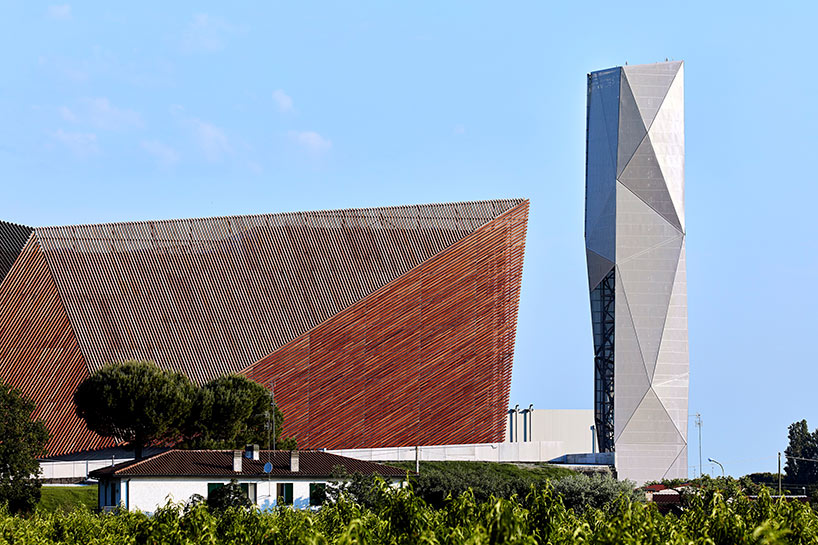
the site is expected to generate 222 GWh, enough to provide for the needs of 84,000 families, while reducing the emission of greenhouse gases into the atmosphere. in addition to the production of energy from wood chips, the site also includes a biogas plant powered by manure, and a small photovoltaic energy plant of approximately 1,000 square meters.
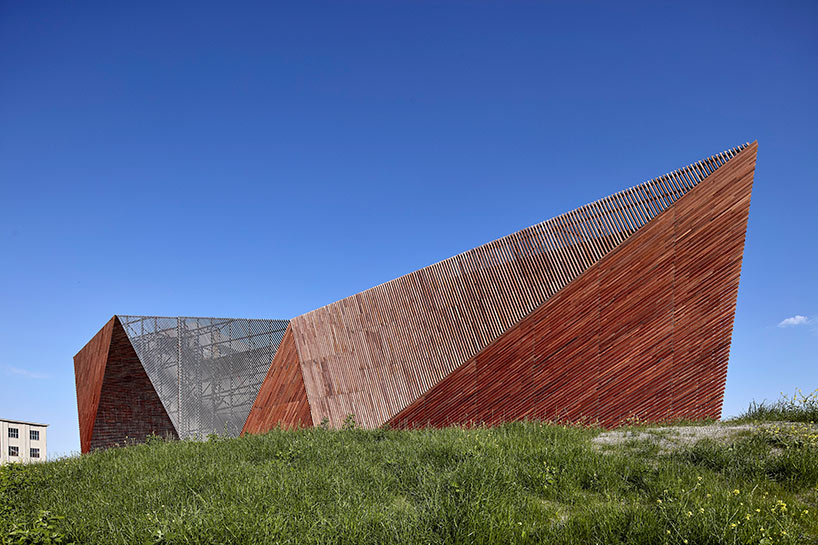
although the site’s main building measures 100 meters (328 ft) in length and 30 meters (98 ft) in height, its apparent scale and appearance is distorted thanks to vaccarini’s use of ‘razzle dazzle’ camouflage. the technique, which was originally used to confuse the range, speed, and heading of ships in the first world war, intends to change the building’s appearance depending on the viewer’s perspective and the atmospheric conditions.
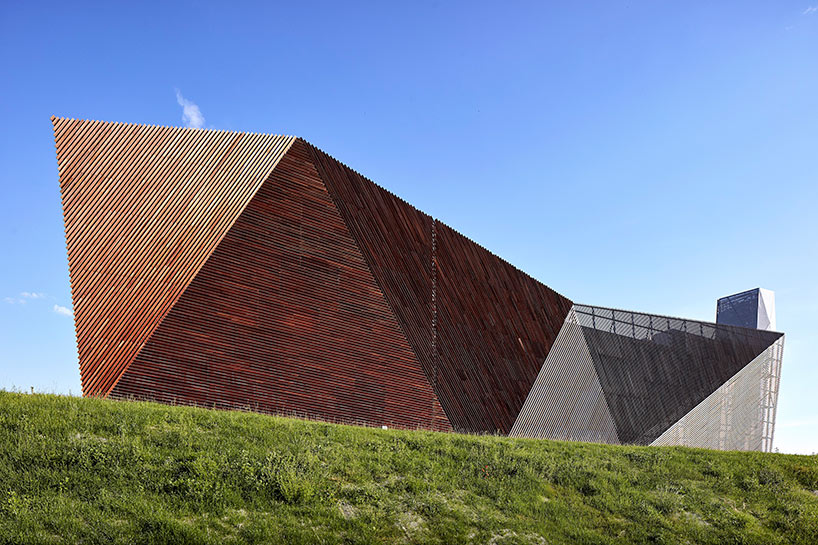
‘the razzle dazzle camouflage technique is extremely interesting to me,’ vaccarini says. ‘I studied it very closely in order to then be able to conceive an unconventional architectural solution. this is not about hiding, but rather about proposing a different reality to the observer, a more complex and deceptive one that, paradoxically, tends to attract their attention, making them wonder at what they see.’
the project is also the subject of a short film, produced by the piranesi experience and directed by daniela de francesco, which can be seen (in italian) at the top of this page.
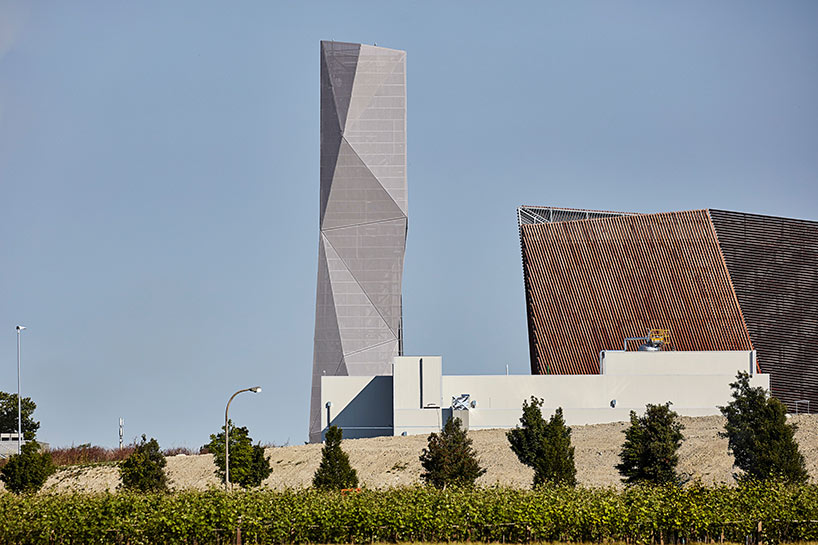
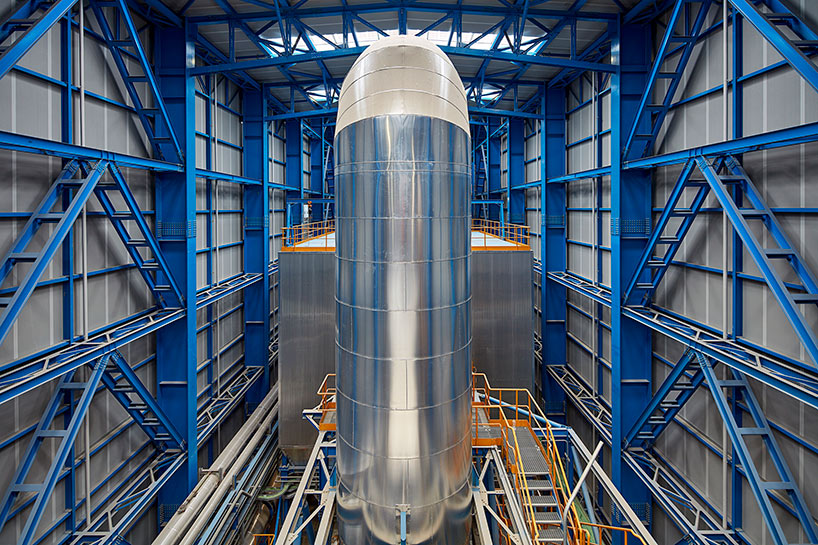
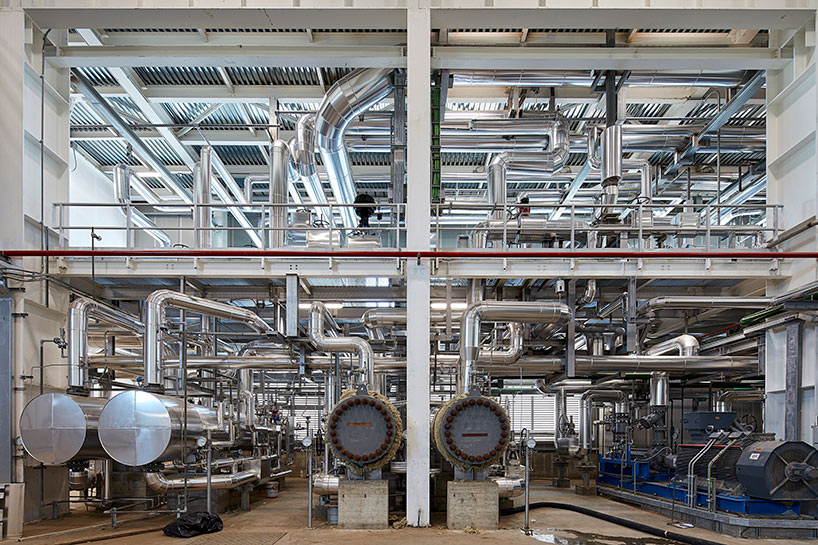
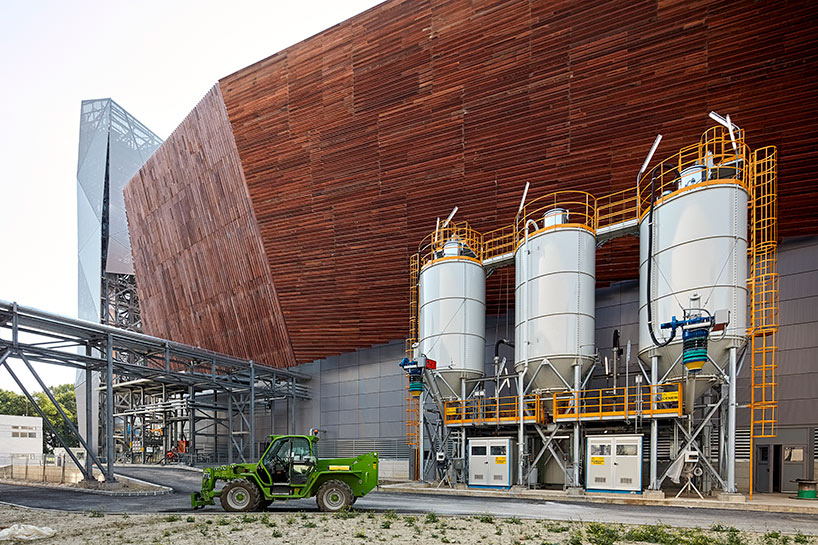
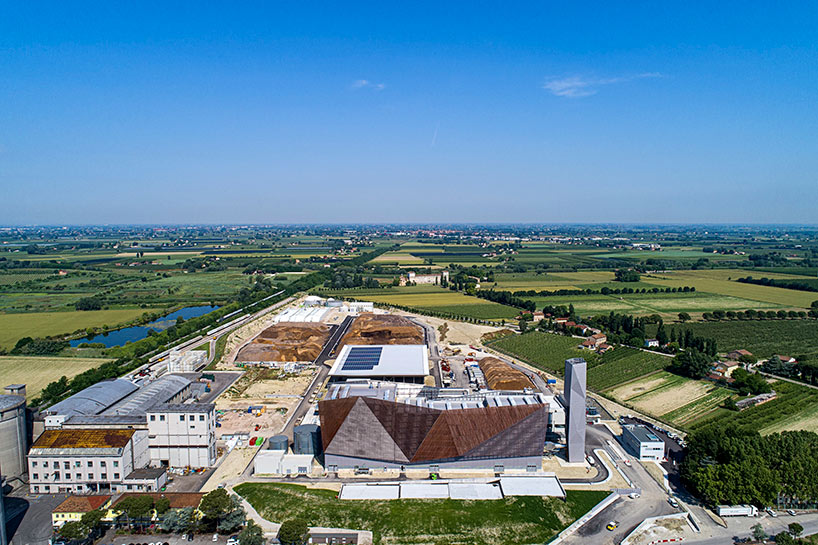
project info:
name: powerbarn
location: russi, ravenna, italy
architect: giovanni vaccarini architetti
client: powercrop russi srl
partners: enel green power SpA, seci energia SpA
business developer: alfredo donati
project managers: santo riganello, carlo manganelli, giovanni pasqui, venanzio garau, fernando maltinti
project engineering: franco meroni, corrado zampatti, antonino caronia
site manager: paolo innocentini
site construction supervisor: stefano salvotti (studio DueEsse)
safety coordinator during the construction phase: daniele arasi (techno-HSE)
safety coordinator during the design phase: alessandro pazzi (libra ravenna)
geologist: studio garassino
landscape design: antonio stignani (studio paisà)
environmental impact study: corsi/retini (steam)
main contractors
general contractor: termokimik corporation SpA
furnace: AET gmbh
turbine and thermal cycle: tosi SpA
architectural envelope: MAP SpA – metal carpentry
general construction: impresa salvati SpA
electropower line: cantamessa SpA
project size
study area: 470,000 sqm
naturalized areas: 280,000 sqm
project area: 167,000 sqm
furnace building and smoke line
length: 110 meters
width: 25 meters
maximum height: 40 meters
maximum height of the chimney: 52 meters
area: 2,400 sqm
electrical power: 30MWe (wood chips from the supply chain and residues from mowing and cleaning of river banks and pruning)
annual electricity production: 222 GWh (will meet the needs of 84,000 families)
project schedule
schematic design: 2008
design development: 2012
construction: 2016-2019
photography: massimo crivellari
producer of the short film: the piranesi experience

